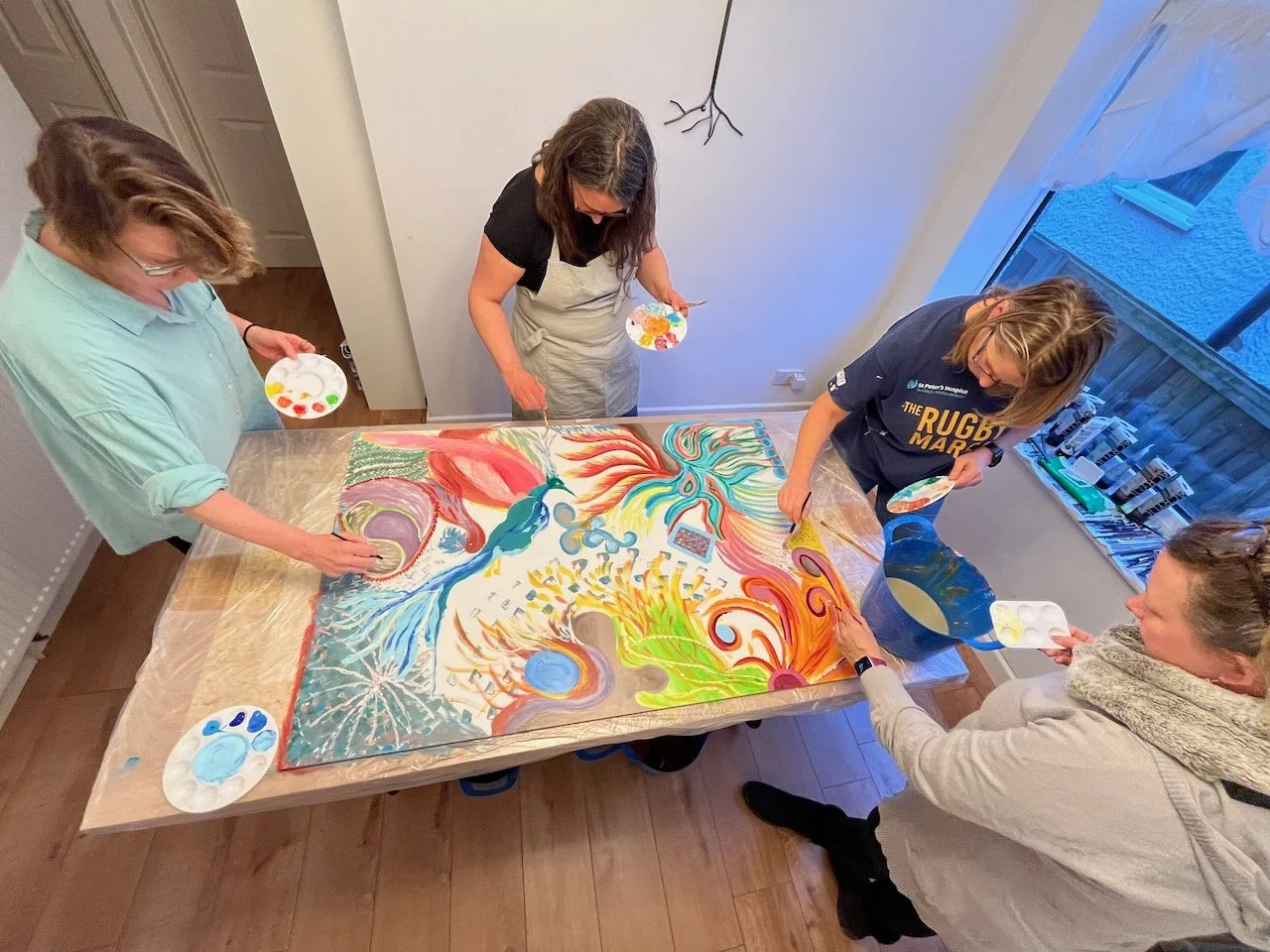
What do you see?
A frog? A duck? A bird, or two? A load of squiggles and weird shapes?
Depending on your view, you'll see something different.
Tunisian Collaborative Painting
a review by Lauren Chiren
This painting was created right after the pandemic by a group of strangers, led by Luke Palmer, who told us the story of Tunisian Collaborative Art.
Born under censorship in 1980s Tunisia, Tunisian Collaborative Painting was created by artist Hechmi Ghachem as a silent act of resistance. Artists worked silently and simultaneously on one canvas — no rules, no hierarchy, no erasing others. Just trust, chaos, and emergence. It was radical then. It’s powerful now.
After spreading to the U.S. and the U.K., this method became more than an art form; it became a metaphor for modern leadership, inclusion, and co-creation. No single author. No ego. Just a shared commitment to expression, collaboration, and collective beauty.
The canvas doesn’t lie — how we work together shows.
During our workshop, we each started in our own corner of the canvas, steering clear of each other’s painting. Slowly, one person added to another’s work. Then someone painted over someone else’s section. With each stroke, you could see everyone watching the reactions of others, trying to figure out what was acceptable and what was not.
The collaboration may not have produced a Sotheby’s-worthy masterpiece, but it created bonds and understanding, pushed boundaries, and allowed tacit agreements to emerge — all in just a couple of hours, one brushstroke at a time.
When you take time to feel, to step back and consider rather than rush in with words — when you become curious and act from a place of wonder — you can achieve so much in a short time. Everyone walked away from the experience having learned so much about everyone in the room. Two people went on to work together, one joined a programme to learn from another, and two became very close friends.
Six people. Two hours. One life-changing experience.


